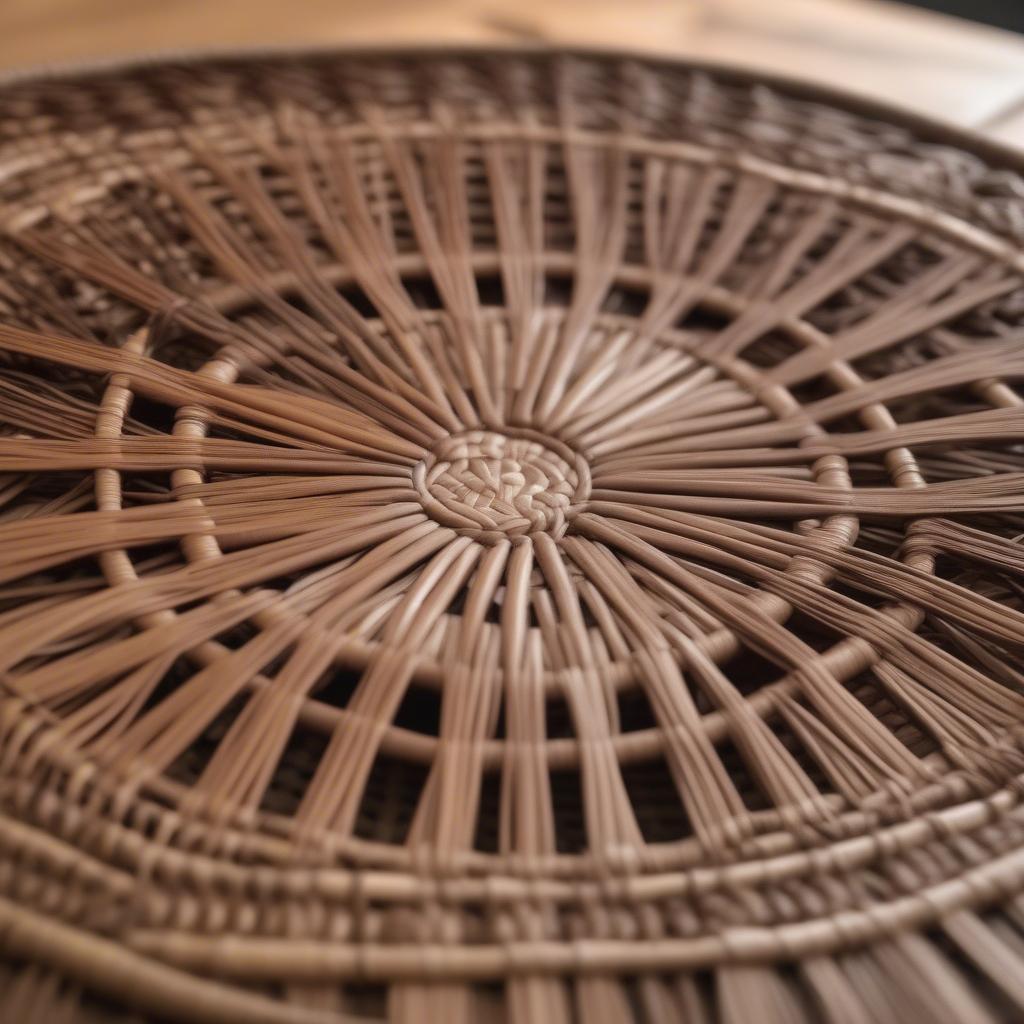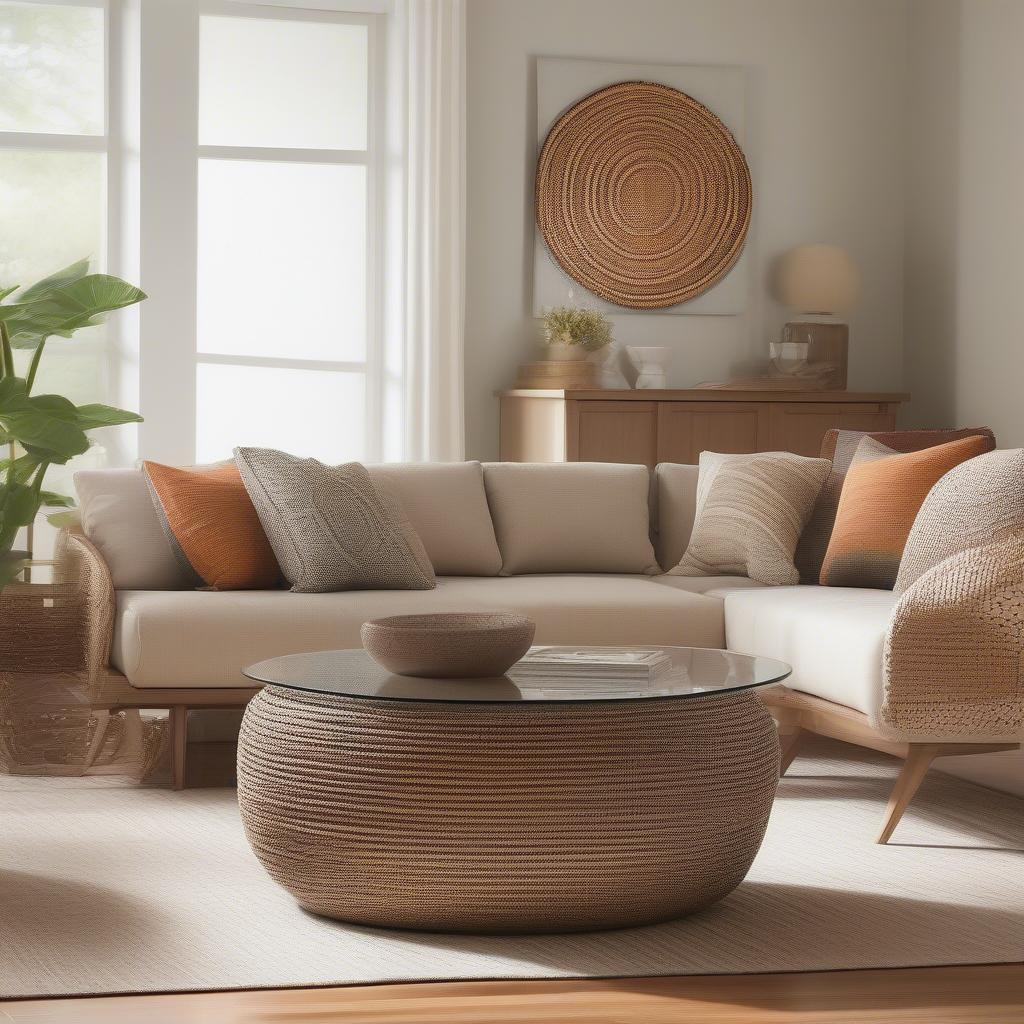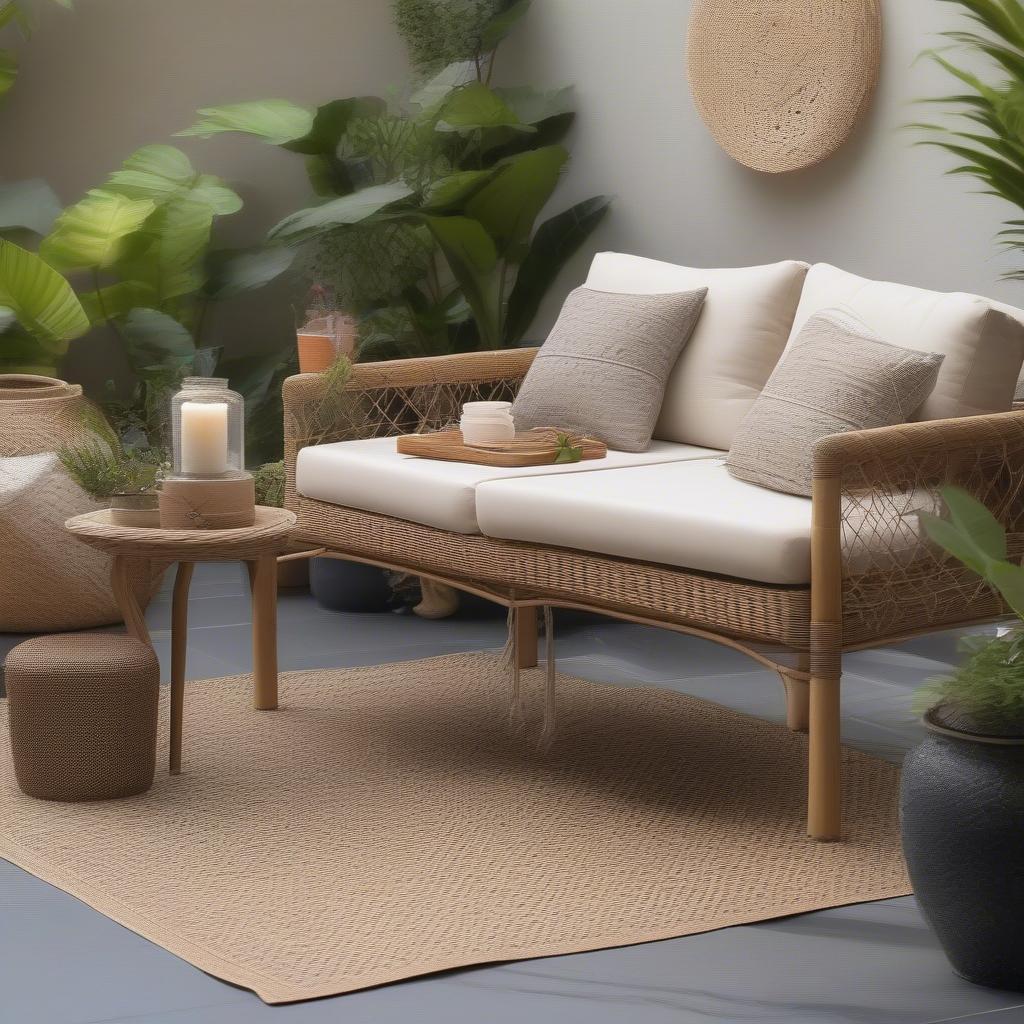Weave Table
Bali Weaving Table: A Touch of Artistry for Your Home
Bali Weaving Tables are more than just furniture; they’re a statement of artistry and craftsmanship. These unique pieces bring the warmth and natural beauty of Indonesian artistry into your home, transforming any space with their intricate designs and sustainable materials. Whether you’re looking for a coffee table, a side table, or a decorative accent, a Bali weaving table offers a touch of exotic elegance.
Understanding the Beauty of Bali Weaving Tables
Bali weaving, a tradition passed down through generations, uses natural materials like rattan, wicker, and bamboo to create stunning pieces. The intricate patterns woven into these tables tell stories of Balinese culture and heritage.  Traditional Balinese Weaving Table with Intricate Rattan Pattern
Traditional Balinese Weaving Table with Intricate Rattan Pattern
Materials Used in Bali Weaving Tables
The most common materials used in Bali weaving tables are:
- Rattan: A strong and flexible vine that allows for intricate weaving patterns.
- Wicker: A technique of weaving, often using rattan as the material.
- Bamboo: A fast-growing grass that offers a lightweight yet durable option.
- Seagrass: A sustainable material that adds a unique texture and coastal vibe.
These natural materials are not only beautiful but also sustainable, making Bali weaving tables an eco-conscious choice for your home.
Choosing the Perfect Bali Weaving Table
With various styles and sizes available, finding the perfect Bali weaving table can feel overwhelming. Consider these factors:
- Size and Shape: Measure your space to ensure the table fits comfortably. Round, square, rectangular, and oval shapes are common.
- Weaving Pattern: From intricate geometric designs to more organic patterns, the weaving style significantly impacts the table’s aesthetic.
- Functionality: Determine the table’s primary purpose – a coffee table, side table, or purely decorative piece.
 Modern Living Room with Bali Weaving Coffee Table
Modern Living Room with Bali Weaving Coffee Table - Material: Consider the durability and aesthetic of different materials like rattan, wicker, bamboo, and seagrass.
Styling Your Bali Weaving Table
Bali weaving tables are incredibly versatile and can complement various interior styles.
- Bohemian: Pair with colorful textiles, macrame wall hangings, and plenty of plants.
- Coastal: Combine with light, airy fabrics, driftwood accents, and seashells.
- Modern: Use the table as a natural accent against clean lines and minimalist decor.
Caring for Your Bali Weaving Table
Proper care ensures your Bali weaving table lasts for years.
- Regular Dusting: Dust weekly with a soft cloth or brush to prevent dirt buildup.
- Avoid Direct Sunlight: Prolonged exposure to sunlight can cause the natural fibers to fade or become brittle.
- Clean Spills Immediately: Wipe up spills immediately to prevent staining.
- Occasional Deep Cleaning: Use a mild soap and water solution for a deeper clean.
 Bali Weaving Table on Outdoor Patio
Bali Weaving Table on Outdoor Patio
Conclusion
A Bali weaving table is a beautiful and sustainable addition to any home, bringing a touch of Indonesian artistry and craftsmanship to your living space. By understanding the different materials, styles, and care tips, you can choose the perfect piece to enhance your home décor.
FAQ
- What is the average lifespan of a Bali weaving table?
- Are Bali weaving tables suitable for outdoor use?
- How can I repair minor damage to my Bali weaving table?
- What is the difference between wicker and rattan?
- Where can I buy authentic Bali weaving tables?
- What are some alternative materials to rattan and wicker for weaving?
- How do I choose the right size Bali weaving table for my space?
For further assistance, please contact our Hotline: +84 388 951 999, or visit our offices at Hanoi, Vietnam or Tech Avenue, Suite 12, San Francisco, CA 94105, USA. We have a 24/7 customer support team.
